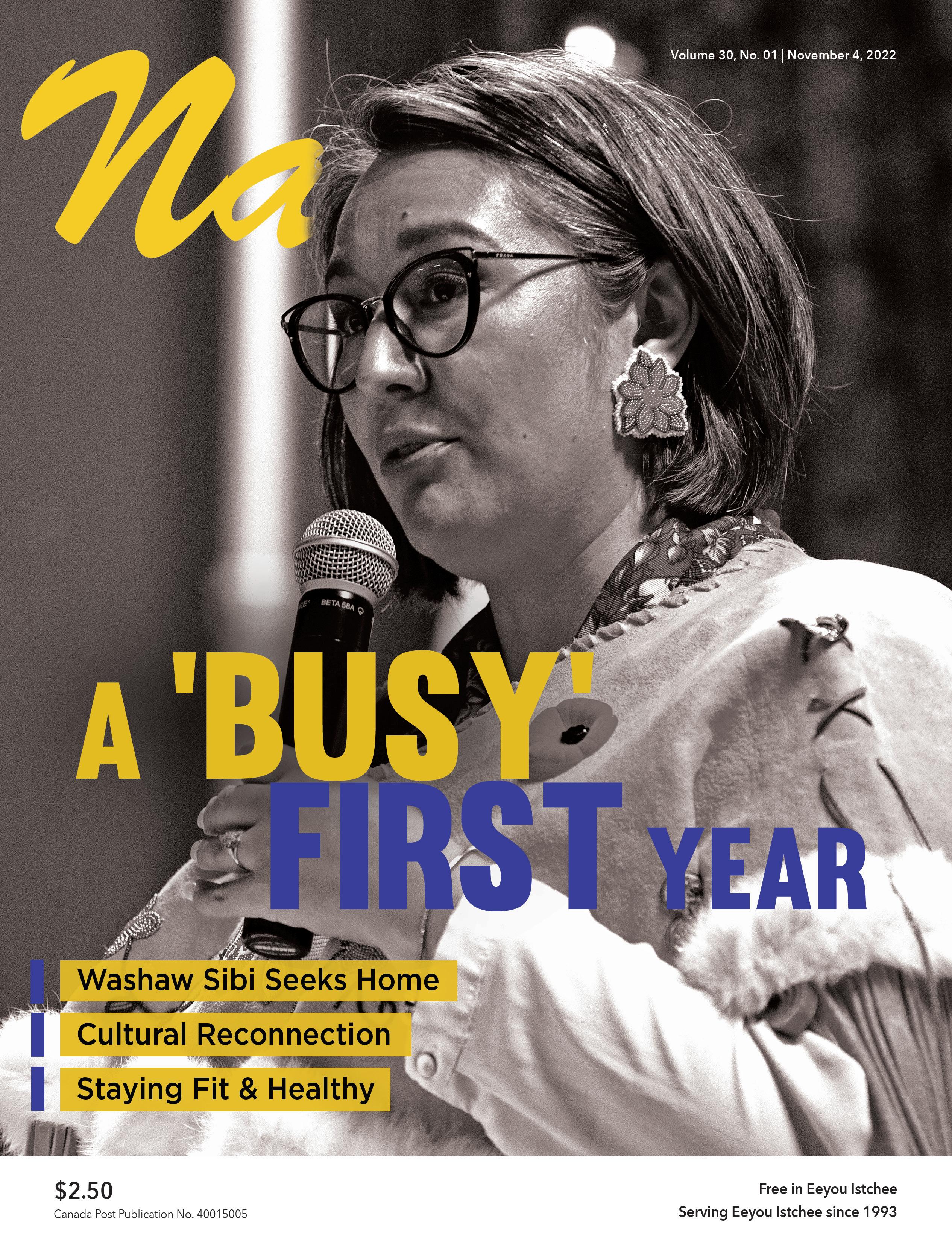
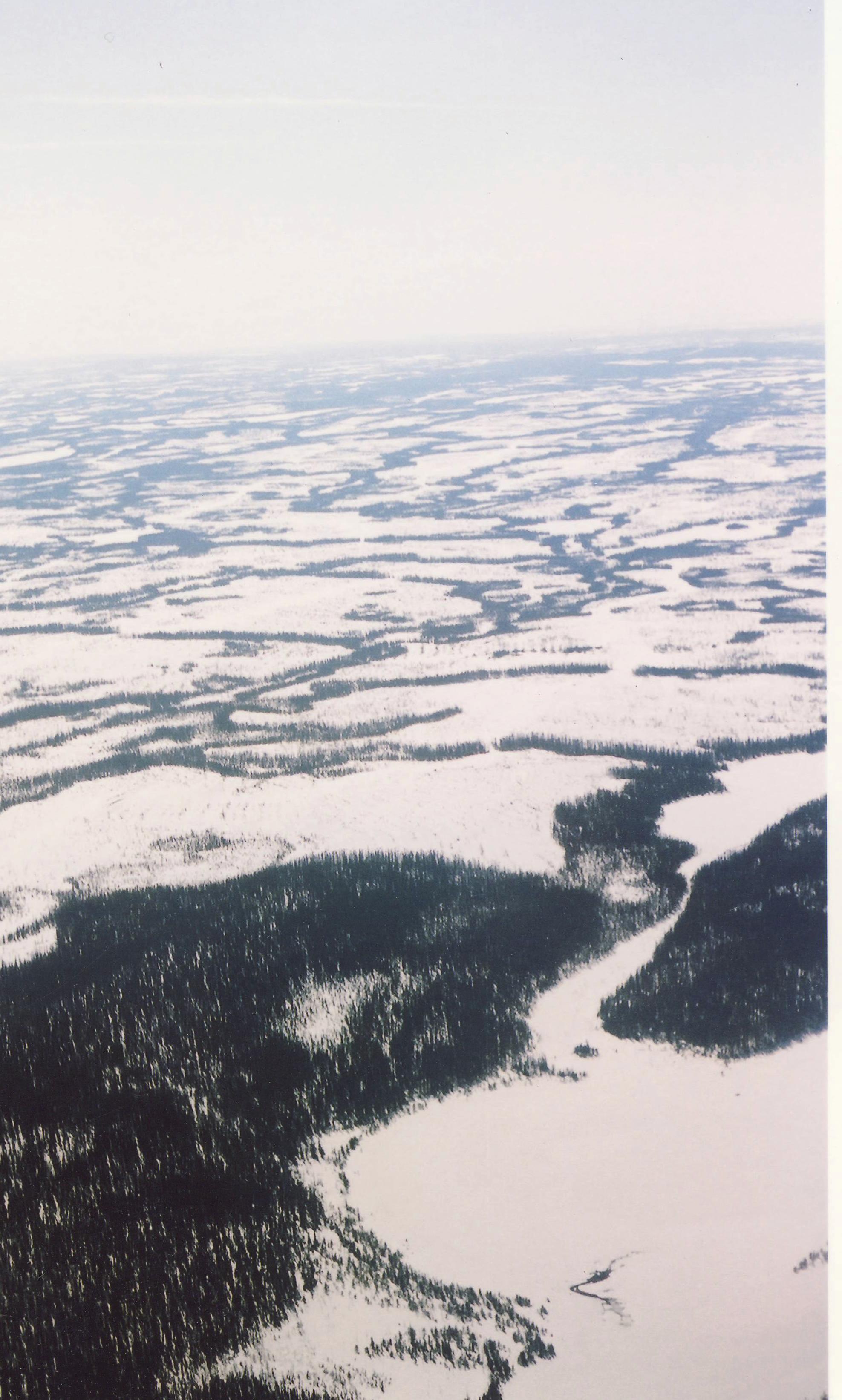

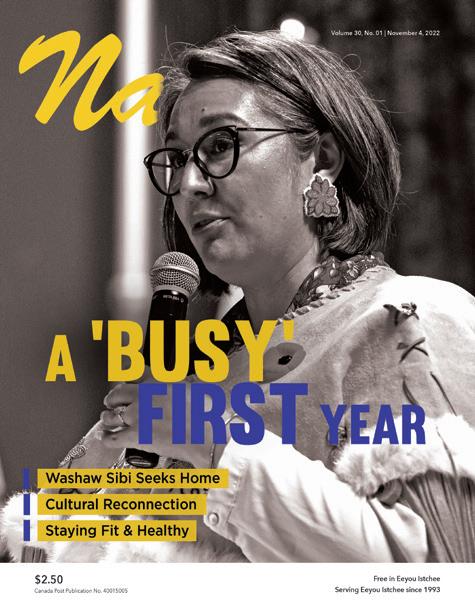
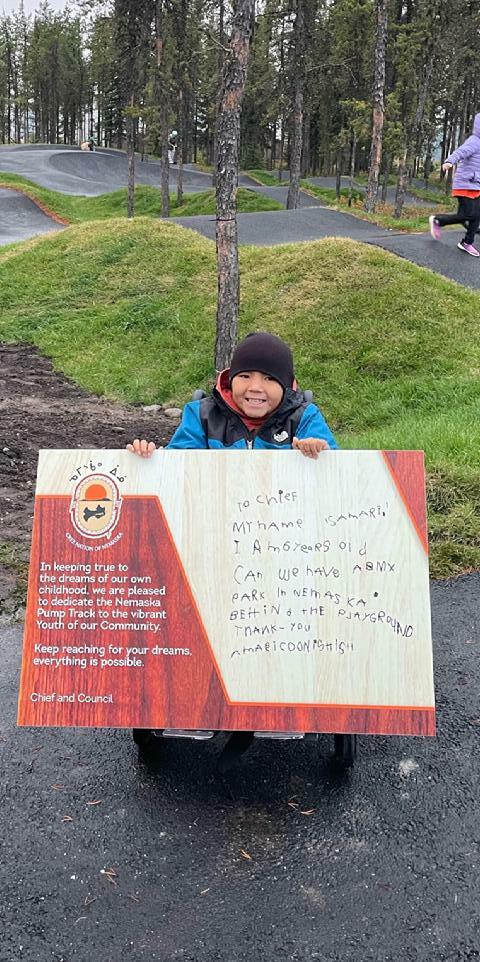


















The Bloc Québécois has stepped up to the plate and finally admitted something we all knew all along. Essentially, that their promises and oaths – like those of the Parti Québécois – mean nothing to them.
PQ leader Paul St-Pierre Plamondon is refusing to swear an oath to the King in order to take the seat in the National Assembly that he won in the October 3 provincial election.

Meanwhile, BQ MPs say said while their oaths were sincere to Quebecers, they decried the connection to the British monarchy. We have always assumed any seats, whether federal or provin cial, means that duly elected members of either Quebec or Canada (meaning they represent the people they serve) have just said that isn’t happening.


I know many Quebecers who honour their word, and their actions prove this. But when your leaders show this type of behaviour saying they will only accept what they think, then you must ask how soon it will be before the rest of the pop ulation they serve fall into the same type of behaviour.

We have all been looking to make the world a better place. But the Bloc and PQ are trying to use speech to misdirect reality. Saying the British monarchy is racist is understandable in a way. But the Bloc Québécois must look at historical facts. That Indigenous slaves outnum bered Black slaves in New France might not be a reason to doubt the Bloc’s claims. Yet the abolishment of slavery seems to have taken place over 50 years between Britain and France. Neither being the first nor the last to enact it.
Still the Nation applauds and thanks the Bloc for assistance in looking at the
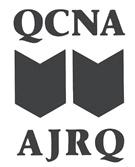
monarchy’s racism. After all, their sworn allegiance to a “conquering empire” is meaningless. Given the residential school system, does that allow future Cree admin istrations to also reject existing agree ments with the federal or provincial gov ernments because it may not suit them?
Because, as sovereign Cree Peoples, we have many claims on the honour of not only a person’s words but their ties to the governments that sent them
Their words have joined the claims of abuses that Indigenous have experienced
throughout the decades. But in the end who makes politicians honour their words and even make it possible to encourage them to change their words to create a better world than we live in.
The tie to the monarchy is nothing compared to what politicians want us to deny. They want us to deny that every thing in the end means nothing but what they want to mean. Be true to yourself and the future you would like that means something more than nothing.
 by
by
The federal government announced a $40 billion agreement to reform the Indigenous child welfare system and compensate victims last January, but now Canadian Human Rights Tribunal has ruled that the government’s offer of $20 billion to First Nations children and families did not go far enough, putting the agreement in jeopardy.
The original agreement was reached between the First Nations Child and Family Caring Society (FNCFCS), the Assembly of First Nations (AFN), lawyers for several class actions, and the federal government.
The agreement set aside up to $20 billion for First Nations children removed from their homes between 1991 and 2022, and for children who were excluded from receiving essential public services between 1991 and 2017 – each receiving $40,000. A further $20 billion was ear marked for reforming the on-reserve child welfare system.
The AFN estimated that more than 200,000 children and youth and their fam ilies could be eligible for compensation, which would represent an $80 billion pay out if all claimants were accepted. The Canadian Human Rights Tribunal rejected the agreement because it would leave some children out and did not guarantee a $40,000 payment for everyone affected.
“The Tribunal never envisioned disen titling the victims who have already been recognized before the Tribunal through evidence-based findings in previous rulings,” according to the ruling made October 25.
Those left out included children removed from their homes but taken to non-federally funded placements, and the families of parents and caregivers who had passed away.
The tribunal also said that the time frame for victims to opt out, by February 23, 2023, was too short. Those who opt out would be able to sue the government independently. The tribunal had originally ruled in 2019 that the federal government was responsible for compensating chil dren and families who did not receive properly funded child welfare services on-reserve.
“More than 300,000 children and fam ilies have been waiting for this settle ment agreement to be approved by the Canadian Human Rights Tribunal. It’s a sad day for the many First Nations fam ilies learning today that their long wait for compensation and acknowledgment continues,” AFN Manitoba Regional Chief Cindy Woodhouse said in a statement. “I don’t know when or if compensation will flow to these kids and families at this stage.”
This means that the government will return to court to continue the legal saga that began in 2007, when the FNCFCS and the AFN first filed a human rights complaint over discrimination in the Indigenous child welfare system.
FNCFCS Executive Director Cindy Blackstock pushed for the agreement to be renegotiated because it excluded many victims. As Blackstock told the CBC, “We support the final settlement agree ment, but we don’t want any kid or any family member who was hurt so badly by Canada left behind.”
Blackstock was not part of the nego tiation agreement between the AFN and the federal government. The AFN sided with the federal government, arguing in the tribunal that only children placed in federally funded placements were eligible for compensation.
However, Blackstock said the recent ruling wouldn’t prevent Ottawa from pro viding the $20 billion to reform the child welfare system on-reserve.
Indigenous Services minister Patty Hajdu said the ruling is disappointing for many First Nations waiting for a final resolution, and she didn’t rule out chal lenging the ruling in Federal Court.
Already recognized as a Cree Nation of Eeyou Istchee, Washaw Sibi continues to push for a physical community that its 600 members can call home. This summer, their dream came a step closer to reality after a tour of all nine Cree communities.

With Quebec unwilling to add further federal Category 1 lands, Cree communities supported Washaw Sibi’s strategic plan by committing to transfer one square kilometre of their lands towards a future village. So far, three communities have agreed to transfer lands while others will ask for their member ship’s approval via imminent referendums.
“Having these Category 1 lands is a milestone for us,” said Chief Annie Mapachee-Salt. “With three, we’re going ahead and hopefully all the communities will be added on as we go. The Elders really understood who Washaw Sibi is and where we came from. Even to have an Elder say they’re part of us, that really touched my heart.”
Ouje-Bougoumou was the first community to pledge a land transfer, followed by Wemindji and Waskaganish. Ouje went through a similar process when establishing their own com munity, receiving Category 1 lands from Mistissini, where many members were living.
The next step is to identify a location for Washaw Sibi’s com munity. Former Chief Pauline Trapper Hester had announced a location between Amos and Matagami in 2014, after 10 years of planning and negotiation. But progress with this site has been complicated by land disputes.
Mapachee-Salt explained that although the trapline had belonged to Johnny Robert who identified as a Washaw Sibi member, because his children and grandchildren now live in the Lac Simon, the Anishnabe community claims the territory.
“We recently met with the Chief of Lac Simon, who stated their members would most likely not allow a community on that

Washaw Sibi’s dream of a real community coming closer to reality
trapline,” Mapachee-Salt said. “We’ve also been working with Waswanipi who have a lot of history on that territory. I try to find a solution with our neighbours.”
As newly elected Waswanipi Chief Irene Neeposh settles into her role, Grand Chief Mandy Gull-Masty told the Nation she intends to launch a discussion table with the Cree and neighbouring commu nities to identify concerns and possible solutions.
“Providing a small space for them to use just exemplifies the unity of the Cree Nation, the understanding that for us to advance, we have to work together,” said Gull-Masty. “I’m proud of those communi ties that have given their support to Chief Annie and her community members.”

At Washaw Sibi’s annual general assembly held October 11-13, two other potential sites closer to Matagami were identified. They will be analyzed at a special members’ meeting November 9. Mapachee-Salt sees any community part nership as a win-win opportunity, leverag ing existing infrastructure while offering economic benefits through joint ventures and community development.
Potential sites in the vicinity of Matagami will be assessed for their construction and cost feasibility. While Matagami hasn’t yet been formally approached, the recent closure of an area mine could make development prospects more attractive.
“I feel a lot of potential with the sites near Matagami where we would be the gateway for the North and South,” sug gested Mapachee-Salt. “The ball is in our court right now to pin that site so negotia tions can begin. Some members suggest ed sites near the Ontario border where our Washaw Sibi lineage came from.”
Eeyouch of Washaw Sibi – which means “the river that flows into the bay” – have always identified themselves as a distinct group that lived on land rang ing from Hannah Bay at the mouth of the Harricana River to La Sarre. When a trading post at Hannah Bay closed, this Cree Nation’s members moved towards posts on both sides of the Quebec-Ontario border.
Hudson’s Bay Company’s registries were used by the Canadian government to determine band affiliations, showing Washaw Sibi members were primarily divided between three different posts. Scattered throughout several Cree and non-Cree communities, many were forced to join Algonquin bands in communities such as Pikogan.
“Colonial laws have disbanded and divided our people,” said Inimiki Polson, Washaw Sibi’s director general. “There’s a general misconception we’re a group of urban Crees who belong to other bands and just want to create a new band. We believe it is our inherent right to be united again. We just want a place we can call home.”
Among the communities visited by Washaw Sibi leadership last summer was Mocreebec, whose people similarly orig inated in Eeyou Istchee but settled in the Moosonee/Moose Factory region for trading and available services. Similarly divided by federal and provincial policies and excluded from the James Bay and Northern Quebec Agreement, they also seek to establish a new community site.
While gatherings can be challeng ing with community members dispersed across a wide area, there was significant participation and renewed motivation evi dent at the recent AGA. During the event, Polson announced that the Washaw Sibi administration office would be relocating to downtown Amos for better visibility and welcomed anyone with questions to visit.
Growing up with an Algonquin father and Cree mother in La Sarre, MapacheeSalt’s six brothers gravitated towards their father while she took to her moth er’s Cree teachings, eventually marry ing a man from Waskaganish where her great-grandmother was originally from before moving to La Sarre.
“I have fond memories of my great-grandmother, lying in bed with her looking at the ceiling with holes,” Mapachee-Salt shared. “There’s so much I can remember from then – hearing the language, moose hide tanning, cooking by the fire. All these things I’ve seen I carry very strong. It’s what keeps me going when I think of those days.”
Air Creebec is operating by respecting and exceeding the rules with extensive cleaning and disinfecting of the aircraft, social distancing on board and at all service counters. We encourage everyone to respect the rules and to stay safe.
For the latest Air Creebec updates, please visit aircreebec.ca/covid19

A Cree family with links to Mistissini, Waskaganish and Moose Factory is in the spotlight after appearing on CBC’s Family Feud Canada this season. The Wabano fami ly, including mother Virginia, children Scott, Vicky and Rick and daughter-in-law Maroline, made it to the September 12-13 taping of the show in Toronto.
To get on the program hosted by comedian Gerry Dee, the family had to get through group and individual interviews before taking part in a simulation of the game. The show has two families competing against each other to see who can guess what the most popular answers will be to survey questions.
The family attended the taping wearing ribbon skirts made by a Moose Cree art ist and beadwork from a Nishinaabe artist in Ontario, they told CBC in an interview. This season sees a total of seven Indigenous families competing. The Wabanos’ epi sode is set to air December 12 at 7:30pm ET on CBC.

During World War II, Ojibway soldier Tommy Prince became one of the most decorated sol diers to serve, forming a part
of the First Special Service Force. Born in Petersfield, Manitoba, in 1915, Prince was a member of Brokenhead Ojibway Nation.
Prince joined the army in 1940 and was later trained as a special-forces parachutist to go behind enemy lines in occupied Norway. He became known for wearing moccasins to silently sneak past enemy patrols, eventually earning him the American Silver Star and British Military Medal. After the war he became known for advocating for Indigenous rights and veterans.
Now, 45 years after he passed away, Canada Post unveiled a special stamp at the Canadian Museum of Human Rights in Winnipeg October 17 with family members of the late veteran in attendance. The stamp features Prince in uniform in front of the northern lights and can be purchased at post offices.
The Secretariat to the Cree Nation Abitibi-Témiscamingue Economic Alliance will open its annual Business Exchange Day this November 14 with a meeting of the Interregional Economic Circle of Indigenous Peoples. The Economic Circle is an initiative of the Assembly of First Nations QuebecLabrador to involve Indigenous Peoples in the Quebec econ omy.
“The Interregional Economic Circle is an oppor tunity to demonstrate that we can take concrete action and contribute to the movement towards reconciliation, which also includes the inclusion of Indigenous Peoples in the Quebec economy,” Secretariat President Ted Moses said in a press release.

This year’s gathering will open with a traditional feast and a showcase of the “Nin” exhibition by Anishinaabe artists focused on the Anishinaabe language. On November 15, several panels will share visions for future development in Northern com munities.
Chantal Hamelin, Director General of the Secretariat, said companies will have the opportunity to declare com mitments toward their rela tionship with Indigenous com munities, hinting at announce ments by resource companies and Hydro-Québec at the gathering.
The final day is an opportu nity for businesses from across Quebec and Indigenous com munities to meet, exchange information, and potentially come away with partnerships or business relationships.
Businesses can attend in person or virtually. Hamelin says the gathering aims to bring together the Cree, the Atikamekw, the Inuit and the Anishinaabe, on whose land Val-d’Or is located. “We’re pros at bringing people togeth er because we’ve built the trust,” Hamelin said.

As the first anniversary of Grand Chief Mandy Gull-Masty’s inauguration approaches, she’s preparing to resume relations with a newly re-elected Coalition Avenir Québec (CAQ) government under Premier François Legault.

Observing during his first term that Legault sometimes didn’t seem to fully grasp the issues faced by Indigenous people, in her congratulatory letter Gull-Masty challenged him to connect his words about reconciliation with action. If he’s serious about working with and learning more about Indigenous peoples, she suggested having a high-profile Indigenous senior advisor in his office.
“When I saw him at the Pope’s visit with the Governor General, he was surprised we all knew each other and we’re our own group of people very familiar with one another,” Gull-Masty told the Nation. “I think this is where he realized there are core issues that stretch across the Indigenous group.”
While she is encouraged that Legault’s new economy and energy transition committee includes the minister of Indigenous affairs and CEO of Hydro-Québec, she was “caught off guard” by his campaign promise to study the potential of new hydroelectric dams. The comments immedi ately provoked strong rejections by Indigenous leaders throughout the province.
“When Legault made these comments, it wasn’t clear if he intended to develop new areas,” said the Grand Chief. “Having Hydro being part of that discussion is important because they know the actual capacity of Quebec. It will frame a prop er discussion linked to the actual energy market, not a theoretical political discussion.”
The Cree Nation Government extensively stud ied the impacts of previous Hydro-Québec instal lations in the region, from wildlife changes to the displacement of people and flooding of traplines. Despite the economic benefits, even nation-tonation agreements like the Paix des Braves have
always faced strong opposition from many Crees.
While the James Bay and Northern Quebec Agreement brought the Cree finan cial and political power, it is important to remember what was lost along the way. The Cree Nation was forced to negotiate the historic 1975 agreement because La Grande River had already been dammed during delays in the legal appeal process.
“When I was first elected, I start ed assessing what we have sacrificed because of this agreement that we were essentially pushed into, because it was a court settlement, and where are we going in the future,” Gull-Masty said. “I’m still completing this analysis of the impact on the territory and the people that were there. What were they told and what are they now seeing almost 47 years later?”
Although she still questions whether the project’s impact was proportionate to what was received, Gull-Masty’s primary focus is determining where the Nation wants to go from here and what’s needed to get there. One year into her mandate, she considered the significant progress made on protections for culture, language and the environment.
“It’s been a busy year,” Gull-Masty remarked. “We’ve invested into ensuring those organizations with a culture mandate have a strategic direction. Language has been a huge issue, trying to support Jamie [Moses] in his new mandate as language commissioner. We’ve probably had the big gest movement in environment.”
While the Grande Alliance with Quebec designated 20% of Eeyou Istchee as protected areas in 2020, Gull-Masty has begun discussing increasing this to the 30% identified during her time as Deputy Grand Chief. To address the moose popu lation’s decline, particularly in Zone 17, the sports hunt has been closed and the Cree Trappers’ Association has supported new moose conservation guidelines for reduc ing harvesting pressure.
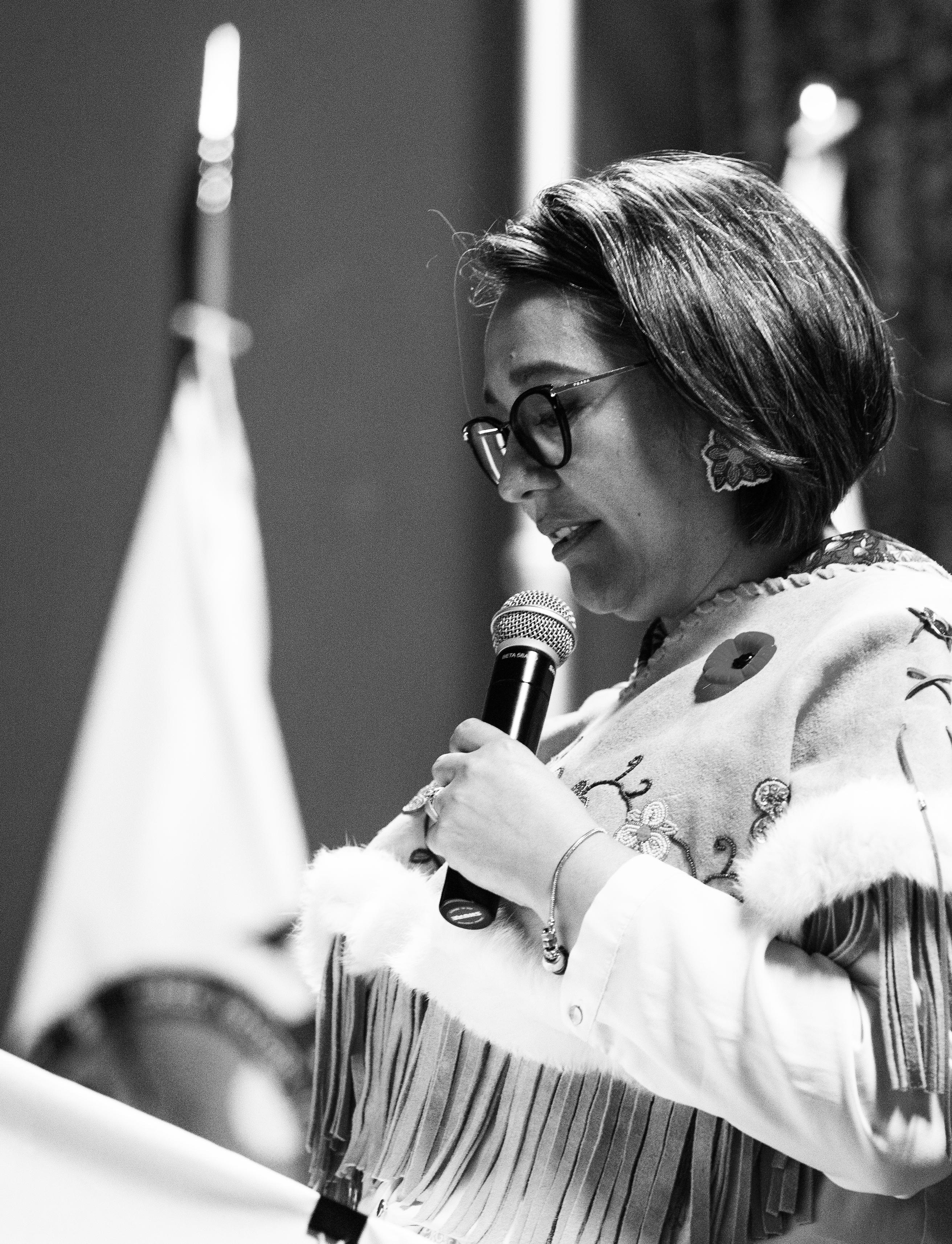
“I think everyone in Zone 17 has felt the strain of reduced activity and there’s a greater realization there has to be collabo ration among traplines in managing hunting activity,” asserted Gull-Masty. “Prioritizing moose habitat right now is extremely important. I want to emphasize my thanks to the people who have committed to the betterment of the moose population.”
Gull-Masty said that although not everyone has understood the purpose of
these measures, most are following them diligently. Waswanipi was the first com munity to publish a series of 13 guidelines, which limit harvests to two moose per trapline or one per family and require all harvests to be reported.
After social media rumours circulat ed about MFFP wildlife protection officers increasing surveillance and monitoring in certain areas, community members were informed these measures are to deter potential poaching activities and are not aimed towards Cree populations.
During the most recent CNG Council board meeting, other environmental mat ters were discussed such as last sum mer’s cleanup of abandoned mine sites. As Davey Bobbish prepares to assume Bill Namagoose’s former role as executive director in January, a key priority was organizing financial resources between various Cree entities and communities.
“The Cree prioritization agreement opens doors to provide easier access to work with the communities,” explained Gull-Masty. “This year we’re pushing for ward an economic regional strategy and bringing in communities to the discussion. We’ve done well in the public sector, but we need to create that space for people to pursue their own entrepreneurship.”
Among the past year’s major events was the Pope’s visit, whose Cree interpret er was Pakesso Mukash. In early October, Mukash had the opportunity to meet Pope Francis in the Vatican, whom he presented with a tobacco pouch and asked to pray for Cree people so they may find peace and healing. Mukash said the Pope admired his traditional vest, smiled and responded, “I will.”

Gull-Masty said the Pope’s visit was an opportunity to collaborate with other Indigenous leaders. With coming nego tiations on files ranging from residential school investigations to establishing com munities for Washaw Sibi and MoCreebec, she believes building bridges with other nations will advance mutual goals.
“I’m grateful that dealing with the Pope file allowed me to meet many Indigenous leaders here in Quebec to develop working relationships,” said Gull-Masty. “It’s such a challenge moving forward for individual nations. I’ve always felt there’s a lot more drive to support one another and fight battles side by side instead of fighting each other.”





Patrick Quinn,
Cree artist Kent Monkman’s exhibition Being Legendary, to be presented at Toronto’s Royal Ontario Museum (ROM) from October 8 to March 23, 2023, plays with concepts of foun dational myths, narrative biases and repatriation.
the narrative and challenge settler artistic conventions.
Paula Menarick has been sewing and crafting since she was just a child. After graduating nursing school in 2006, she’s also managed to make it into a career, selling her crafts through her brand, Fast Cloud Inspirations.

Originally from Chisasibi but now liv ing in Ouje-Bougoumou, she now sells everything from beaded earrings, mirrors, cell-phone stands, baby bonnets, walk ing-out-ceremony outfits and other crafts through her online shop.
The ambitious installa tion features a series of 35 figurative paintings situated amid cultural belongings from the museum’s extensive permanent collection that recontextualize history from an Indigenous perspective.
She wants to learn everything she can about crafting techniques and in the past spent time fruitlessly searching online for conferences on Indigenous art. So, when she was invited by the Cree Native Arts and Crafts Association (CNACA) to attend the Indigenous Women’s Arts Conference in Ottawa/Gatineau, she jumped at the offer, joining a group of five travelling from Eeyou Istchee.
Metropolitan Museum in 2019.
traditionally done birchbark biting to plot out designs for clothing, among other things.
“Pat was amazing. She showed us tricks on how to fold and how to bite it and create different motifs: flow ers, or women, or dragonflies, or bears, or anything. She did a few with us, I could not believe how detailed she could do a birchbark biting within a minute – she blew my mind!” Menarick shared.
Presenters constantly discussed the power for healing and reconnecting with culture through art and crafts. There was also a marketplace set up at the St. Laurent Shopping Centre in Ottawa, where Menarick enlisted one of the CNACA members to sell her crafts for her.
Coming from the Fisher River Cree Nation in Treaty 5 territory in Manitoba, Monkman was an abstract expressionist painter when he began creating art in the 1990s. When he turned to a representational style, draw ing from European masters like Peter Paul Rubens and the portraiture of Paul Kane and George Catlin, it was to communicate themes with more directness and urgen cy.
“I am exploring how Indigenous presence and knowledge is embed ded in this land much lon ger and deeper than how it’s been presented in the colonial version of history here on Turtle Island,” said Monkman. “Using storytell ing, this exhibition refers to the interruption of knowl edge caused by the colonial attempts to erase us, but it also talks about life before Europeans arrived and how leaders in our communities shine a path for us to move forward into the future.”
Half-Cree and half-Inuk, she was excited to attend an Inuit coat-making workshop at the gathering. “It lasted two full days,” she said. “It was a lot of work, but I was able to finish it by the end of the second day. It was so amazing! I felt connected with my Inuit culture. Being with people from different Inuit communities, it felt like I was with family.”
While at the gathering, Menarick also was able to attend a quillwork workshop, something she had wanted to learn and managed to pick up quickly: “I think it’s one of my favourite new crafting hobbies.” Eventually, she wants to be able to invite the workshop instructors to come to Eeyou Istchee and teach quillwork and caribou hair tufting.
The Royal Alberta Museum announced it would return to the Plains Cree the pâpâmihaw asinîy or Creator Stone just before his exhib it opens. It’s a meteorite shaped like a buffalo head that holds spiritual power and great meaning for the Cree. Monkman was thrilled by the synchronicity of this repatriation, as it had once been part of the ROM’s col lection.
“It was so empowering. Everyone was kind and supportive, I really enjoyed the experience,” she recounted. “I was lucky because a few doors down there was the Inuit throat singing group and on the last day they were wrapping up but dropped by our workshop and did some throat singing while we were sewing. That was amazing and beautiful and powerful.”
As in many of Monkman’s earlier works, his gender-flu id alter-ego Miss Chief Eagle Testickle plays a prominent role in this exhibit, serving as flamboyant interpreter and subversive witness of its various sections that span from pre-colonial times to the present and beyond. Her origin story came into sharp er focus when working on her “memoirs” with longtime collaborator Gisèle Gordon. “Miss Chief was created to inhabit a more empowered understanding of Indigenous gender identities and sexual ity,” Monkman explained to The Art Newspaper. “In old Cree there were no words to distinguish gender because it just didn’t matter. The Miss Chief character was born out of this desire to reverse the gaze and say, ‘Hey, as much as you’re looking at us, we’re looking at you.’”
A gala event held in the Great Hall of the Museum of History in Gatineau featured Inuit throat singers, hoop dancers and an opening prayer by an Elder. “I felt really supported and encouraged as an artist,” she said. “It was beautiful, well organized and very empowering.”
“It’s cool to watch when people engage with the work because at first, they think they’re seeing one thing but then it’s the opposite,” explained Monkman. “I’m using a similar medium to the painters of Western art history but communicating a worldview that is radical ly different to the original that I’m drawing inspiration from.”
For Dawn Iehstoseranón:nha Setford, confer ence organizer and President of the Indigenous Arts Collective of Canada, the gathering had three main goals: to make Indigenous women aware of the cultural property held at the Museum of History that they can access to revitalize arts and crafts; to facilitate work shops on traditional and endangered art forms; and to connect women. They held workshops on everything from beading to hoop dancing to dreamcatcher making to hand drum making to ribbon skirt making.
With tongue-in-cheek delivery, the opening paint ings position Miss Chief within Indigenous cosmolo gy as one of the universe’s creative spirits, juxtaposed with an actual meteorite from the ROM collection, explaining, “When I fell to askîy – this planet you call Earth – my form shifted from pure matter to cloud, to rain sprinkled with cosmic dust, and love.”
Setford estimates roughly 500 to 600 women partic ipated, coming from every province and even from the United States. This was important for her, as “a lot of us are really unconnected. There’s a lot of urban, there’s a massive group of victims of child apprehension like the Sixties Scoop, we also had some residential school survivors.”

She originally planned the first conference in 2019 and had planned another in 2020 when the Covid pan demic hit. Though she lost most of her deposits, Setford was able to get more funding this year, and used it to pay for more workshops and more performers, in addi tion to the gala dinner.
In another of Being Legendary’s paintings, iri descent dinosaurs are inter spersed with tiny sparkling mîmîkwîsiwak people nearby an actual horned dinosaur skull, a mastodon’s upper arm bone and a mammoth tooth. Monkman wanted to make a statement about what Indigenous children are taught about the fossils extracted from their lands, which expanded to consider the vast field of Indigenous science embedded in Cree language and culture.
Monkman has sought to create change from within by serving on the boards of Toronto’s Gardiner Museum and the Glenbow Museum in Calgary, helping to shift
Menarick also attended a birchbark biting workshop, hosted by Pat Bruderer, a Cree from Manitoba. After working and doing research at the Aanischaaukamikw Cree Cultural Institute in OujeBougoumou, she discovered that the Eeyouch had
While the glamorous Miss Chief has provoca tively appeared alongside colonialists in Monkman’s previous works, notably his Shame and Prejudice exhi bition, she reached a whole new audience when fea tured in two massive works commissioned by New York’s
“This was something I had always wanted to do when I started the organization 12 years ago,” she said. “That really evolved into seeing that while women were doing great contemporary work, we were losing those teachings from grandmothers and the past. I wanted to make sure we could offer a foundation of knowledge to contemporary artists and can better explain how they’re jumping off from the original visual arts that our ancestors did.”
“One of the big attrac tions at ROM are the dino saur fossils,” Monkman noted. “I wanted to talk about the interruption of the knowledge that Indigenous children were taught by their ancestors, which began in


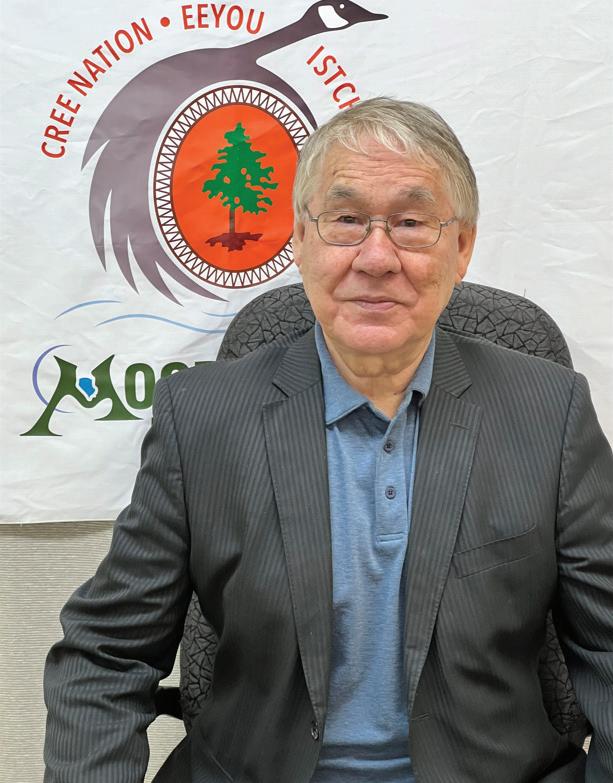
Communities unveil new recreation infrastructure by Patrick Quinn,
Recognizing the power of sports and recreation to promote healthy life styles, Cree communities are unveiling innovative infrastructure projects. Among the most exciting are a BMX pump track in Nemaska and a walking trail in Waskaganish.
On September 30, a grand opening celebration was held for Nemaska’s new pump track, located beside the community youth centre that opened last year. While the centre’s ameni ties include a yoga room, sauna, theatre and basketball court, the impressive outdoor pump track was the dream of six-year-old Amari Coonishish.
“We would search for a BMX pump in other communi ties,” said his mother, Nathalie Mettaweskum Coonishish. “Mistissini was the closest one. One time he asked if we could make one in our backyard. We explained that [the Chief] was the one who made decisions in the community. I explained you have to write it in a letter so that’s what we did.”
With the help of his moth er, Amari wrote the letter over two weeks and hand delivered it to Chief Clarence Jolly in his office. Two days later, Amari was surprised he hadn’t heard back yet. However, Jolly replied this February or March, a year and a half later.
“He said, ‘Remember the let ter you wrote to me? They’re going to start working on it this summer’,” Mettaweskum Coonishish recalled. “His eyes


just lit up and he was speech less. Then he went telling every one they’re going to make the park and we’d drive by to see the progress.”
Pump tracks are circuits of “rollers“ and banked turns designed for bikes to generate momentum by “pumping“ with up and down movements rath er than pedaling. While Amari would previously have to trav el at least six hours away to Mistissini or Ouje-Bougoumou to ride these tracks, now Nemaska has reportedly one of the biggest in the province just beyond his backyard.
When Nemaska people were displaced by hydroelectric development in the 1970s, Chief Jolly’s family was one of many who relocated to Mistissini. As he remembers returning home to a community with nothing but tents and teepees, he’s happy to see the opportunities children have today.
Amari was so appreciative of this initiative that he convinced his mother to make all the workers breakfast sandwiches during the last week of construction, which he delivered one Sunday morning. A sign at the track includes a copy of Amari’s orig inal letter and a message from
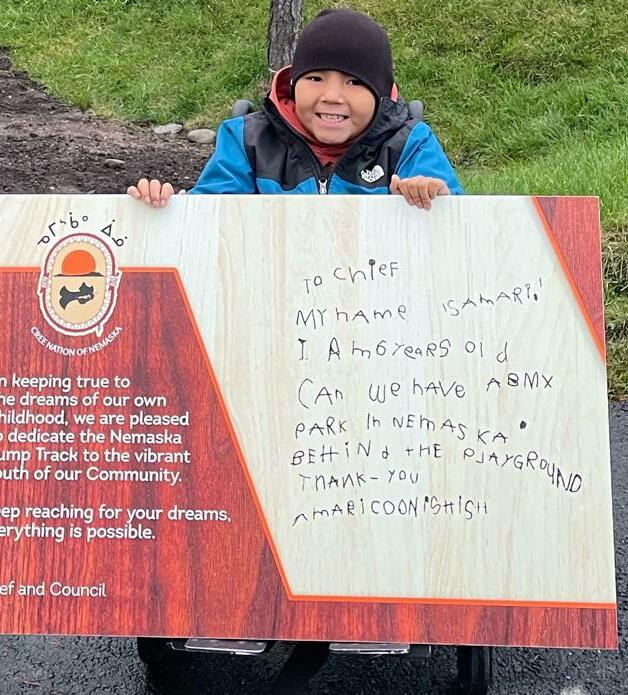
Chief and Council encouraging youth to “keep reaching for your dreams, every thing is possible.”

During a bicycle and helmet safety workshop held during the grand open ing, Amari learned the hard way that caution should be exercised when rid ing. A few days after the track was com pleted, he fractured his leg attempting a trick on his scooter. Now nearly recov ered, he told the Nation his favourite activity at the track is doing jumps and “wheelies.”
“A few days ago he took off his plas tic boot and he’s back riding his bike,“ reported Mettaweskum Coonishish. “He wants to try out all things that go fast. It was a good project that was done for our kids of any age to spend time outdoors and be active. There are kids there every day during lunchtime and after school.“
For fitness at a different pace, Waskaganish recently opened a new 3.6 km walking trail. One goal was pro viding a safer alternative to the com munity’s access road, which had seen faster moving traffic since being paved after km 22 about five years ago.
“There were a few close calls of people getting into accidents,“ said Charles Hester, local director of cul ture, sports and leisure. “Given that the road’s pointed towards the sunset in the northwest, the sun’s in your face. The community wanted a safer walking place – walking was a pretty popular form of exercise during Covid.”
The new trail is named for Alice Shecapio, who lost her battle with breast cancer a year and a half ago and was posthumously honoured with an Acts of Service medal by the Cree Nation in September.
“She was a role model to a lot of young ladies in the community,” shared Hester. “She was very active in every facet of the community – minor hockey and broomball, youth dance, she’d find accommodation for the guests coming in. We wanted to make something in her memory.”
Starting from the local clinic, the new trail runs eastward to the com munity’s welcome sign at km 4 on the Waskaganish access road. It connects to the existing Charlie Boy Trail, named for the late Elder also named Charles Hester, which goes about 6 km from the
clinic in the other direction along the riverside.
Posted alongside the kilometre markings on the new trail are small signs displaying one of 18 Cree values, such as humility or sharing, collected from Elders during a planning exer cise. These correspond with interpre tive signs displaying traditional uses of various trees and plants.

Hester suggested the trails encour age people to reflect on traditional Cree values and activities while looking out over the Rupert River, traditionally called Nemiscau, meaning “where the fish are plentiful.” That’s what attracted Cree people to the location then known as Kanio-Kashee for summer gather ings after being on their traplines 10 months of the year.
As some artefacts found in the area can be traced to the Innu in Labrador over 3,000 years ago, the route was pop ular long before Hudson’s Bay Company established its first trading post there on September 29, 1668, which is now designated as the community’s birthday.
The Alice Shecapio Memorial Trail’s grand opening September 29 was attended by her family members and accompanied by celebrations and con tests like archery and arm wrestling.
“When you walk along that trail, sure enough you can imagine canoes and inland people coming to the sum mer gathering spot,“ said Hester. “The portages still used today are thousands of years old. Back in the day, the Rupert River was the main highway that con nected all the communities.”
includes a copy of Amari’s original letter and a



ACROSS 1 Heavy reading 5 Pageant wear 9 Rosie, on "The Jetsons" 14 Enthusiasm 15 A while ago 16 Day or thing starter
Message in a cell 19 Arctic bear 20 Snub, in a way 21 Texas town in a George Strait song title 23 WSJ alternative 24 Sharp blow 26 Tupperware top 27 Joint woe 30 Type 33 French cheese 35 Part of the foot 36 Type of campus bldg. 38 Semicircular 66 Basketball dunk 11 Fight starter 41 Go-between window 67 Sugar ___ 12 Kind of surgery 44 Saw the light, 40 Backslide 68 Swirling current 13 Novice with "up" 42 More than plump 69 Name on toy 18 Formerly, once 48 NYC sight 43 Do laps, perhaps fuel trucks 22 ___ Baba 49 Herding dog 45 APR part 25 Make a collar name 46 River bottom DOWN 28 Roger of 50 Blackjack option 47 Ones seeking 1 "Round and "Cheers" 53 Trip planner's aid change Round" singer 29 Flourish 54 Overflows 50 Luxurious resort Campbell 30 Like some winter (with) 51 Meeting, slangily 2 Scientific suffix roads 55 Like hand-me52 Test for teens 3 Kept up 31 Lean to the side downs 55 Apt to topple 4 Gas brand of old 32 Spoon-playing 56 Old Chevy model 59 Schumer's group 5 To an extent site 57 Downhill racer 61 Kind of panel 6 Santa ___ winds 33 Amorphous 58 Mikey's cereal 62 Not up to a task 7 Kind of nerve mass 60 Don Johnson 64 Calendar entry 8 Control spot 34 Bumpkin series, "____ 65 De Niro film, 9 Payback of sorts 37 Pub projectile Bridges" "Cape ____" 10 Grape-shaped 39 Alice's affair 63 Scoundrel

 by Sonny Orr
by Sonny Orr
As the moose says, turn down those headlights, man! Someone might get hurt!
That’s what I heard back in the day during a long pause from sheer darkness on a back road near a lake that shone in the moonlight. I had lit a cigarette, only to be told to hide the flame from the elusive moose, that is only interested in the oppo site sex and can be mean and ornery. Then my buddy let out a few moose grunts to entice some nearby buck.
About 10 hours later, we settled into our office chairs and pretended to work, thinking of that moose that didn’t answer our bleats and calls. Either we didn’t have the right tone or there just weren’t any moose around. We would kid that we had better luck playing loud music and driving around and bumping into moose, rather than standing still for hours calling and listening.
The listening felt like I was stretch ing my eardrums tighter and tighter until the sound of silence was deafening. Or was that the air pressure we could hear resonating in our heads? No, it’s just our own body sounds – the blood pulsing, the lungs breathing and the occasional intestinal complaint. The second night seemed longer even though the hunt was less than half the time of the first night. Ah well, that bull will live on, wherever it was.
I might not be a crack moose hunter but having just explained the entire hunt in two paragraphs doesn’t make me a couch-potato moose hunter. The interest is there, but not the forest or the time.
Couch-potato hunters constantly compare rifles, bullets, weights, range velocities, scopes, and the ruggedness, fog-free and waterproof qualities of those night-vision goggles. And so on and so on. On occasion, they might try a moose hunt when the time, wind, moon, and wife’s permission all come together to coagulate into a real one-night hunt. Don’t forget the reflective clothing, emergen cy self-inflating dinghy and the guar anteed 24-hour steaming thermos. Also, use those cold-fusion lighters so that the flame won’t spook the moose when you need that cigarette.
Then the gallons of moose urine will be carefully loaded into the back of the already tightly packed SUV. We weren’t sure if it was supposed to be used as a lure or a protectant, so we liberally splashed it around in a pentagram symbol, just to be safe and sure. Then a smudging of some scent on our camouflage clothes and we’d be set for the long night of waiting, thinking overtime, and the battle against the urge to make a sound.
The silence is maddening. If you break it and there’s a moose just 10 feet away checking you out in the darkness that engulfs everything, then you will serve a


life sentence of reminders and jokes. You will be forever known as the loud hunter who couldn’t keep his mouth shut and ruined it all for the entire clan.
Thankfully, that didn’t happen as a shot rang out after a strong beam of light, so strong that it melts fog, pointed out a moose barely 50 feet away. The moose was picked up and processed, and, thankfully, was close enough to the road making transport easy-peasy.
It’s a familiar story. As are the ones about the close calls with poachers who very nearly became victims themselves. The stories of game wardens and of the one that got away. Most times, there’s no time to chit chat, only to cut up meat.

One day, perhaps, the moose will be more than just a story in the dark, or road kill. Instead, it may be a year-round staple at the supermarket. Then we could start our own mooseboy culture, our version of cowboy culture.
Imagine riding a moose around. It would be equivalent to the off-road ver sion of the Italian stallion. But that would take years of evolutionary change in the moose and in our mindset. Remember, call all night and shoot to feed a family.



Halloween was always a big deal for me, my family and friends back in Attawapiskat when I was growing up. This event full of goblins, monsters and funny costumes is still prominent in remote Indigenous communities up the James Bay coast and across Canada.
The Cree of James Bay love to laugh. We find humour in just about everything you can imagine. My non-Indigenous friends find it a little puzzling when we Cree get together and start poking fun at just about anything. We laugh at silly little things that might not seem funny to many non-Indigenous people. We joke about tragic events, and this makes some uneasy. We mercilessly kid each other all the time.
Celebrating events like Halloween so intensely probably has to do with needing to forget our troubles and the difficulties of living in our remote Indigenous commu nities. We suffer from living with poverty, poor housing, substandard healthcare, addictions and systemic racism. We look for ways to forget it all and find some time to act silly, pretend we are something else and to laugh and rejoice at getting together for fun.
You might see on social media that people up the James Bay coast have been preparing for Halloween for weeks. This is normal for us. Everyone takes great pride in figuring out what costumes they will wear. They work hard and long at developing creative handmade cos tumes. It is not just about the free candy as becoming someone else for a day and providing a thrill or laugh for others.
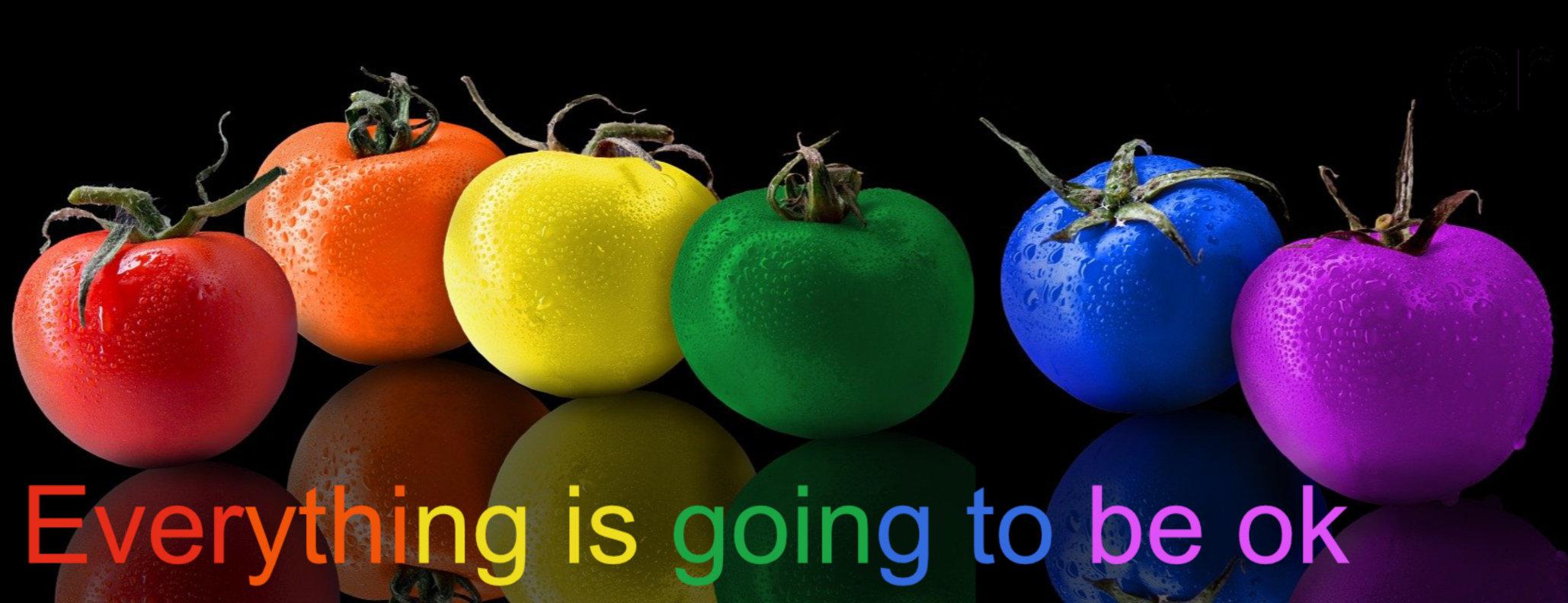

Of course, it really does not make a lot of sense for everyone to be eating so much candy and chocolate in enor mous quantities, especially when many Indigenous people have problems with diabetes. However, the classic Halloween is as much about sugar as it is about cos tumes and laughter.
Every year there are events where the best costumes are selected during gatherings and people are rewarded with gifts and prizes. I recall many Halloween events where everyone was thrilled to participate and react to the creative cos tumes people had put together for this special fun night. For a day our small First Nation became inhabited by ghosts, gob lins, pirates, princesses, kings, queens and cartoon characters.
I recall everyone being lost and involved in laughter and excitement. For one day you could be a clown, a cartoon character or even a terrorizing monster. There was and will always be something magical about that. It is pure theatre.
One image that will always stay in the minds of my family and friends was when my late dad Marius dressed up as the Pope for Halloween. He looked per
fect and could have been taken him for a high-ranking member of the church if he had walked onto the Vatican grounds. He made the costume come to life with his mischievous ways and a Kataquapit sparkle in his laughing eyes.
My nephew Adam decided this year to dress up as a high priest. When I saw this image on social media I immediately thought of my dad and how much he liked to laugh and have fun. It was good to see Adam reminding all of us about the impor tance of laughter, joy and fun.
So, happy Halloween to everyone and I hope you all manage to enjoy the day. Pay tribute to laughter, fun, pretending and forgetting momentarily all the trou bles in the world today. Enjoy the candy and chocolates and if you are out and about on the streets take care of traffic.
Be aware that we are still in the mid dle of a Covid pandemic and that means wearing a mask, staying away from close contact with others while moving around town and washing your hands well when you get home.
If you see anyone dressed up like the Covid spike virus, make sure to keep your distance.
“I was looking for that!” Quick and easy! Need to call the clinic? “I found it where it’s always been. In the phone book.” “What’s the Post Of ce number?” Look in the phone book!

